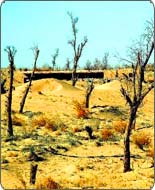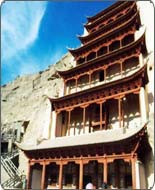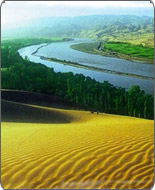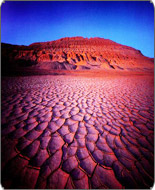Spotlight

Bringing the Desert under Control: China in Action
Around China will bring you a special series focusing on China’s efforts to deal with one of the most pressing environmental problems of the modern age – the expansion of the deserts. A major culprit in China’s desertification problem, is human activity.
Please join us on CCTV International >>
From April 23 – April 30
Program Video

Part 1 -- Safeguarding Our Home
Desertification is the degradation of land in arid and dry sub-humid areas, resulting primarily from natural activities and influenced by climatic variations.
It is also a failure of the ecological succession process.
A major impact of desertification is biodiversity loss and loss of productive capacity.

Part 2 --The White City
Chinese experts estimate that desertification in the country is annually causing a direct loss of 64.2 billion yuan (some 7.73 billion US dollars) with indirect economic losses of 288.9 billion yuan (34.8 billion US dollars). Facing this serious environmental issue, the Chinese government has promised to hasten work on controlling and combating desertification.

Part 3 -- China in action
Desertification causes a 50-billion-yuan-plus loss to China every year. Ecoenvironment in artificially forested desert is still very fragile, particularly under the strong pressures of population, economic development and pollution.
In fact, China has gained some control over desertification by slowing it down to 1,283 sq km every year, when in the late 1990s, 3,436 sq km of land became deserts every year.

Part 4 -- Digging gold in the desert
In the near future China will direct its focus of attention to control of desertification in its north part, and stop the expansion of deserts by 2010.
Deserts in China might even start to become smaller in 2030, if China fulfills all its current promises. By 2050, all the reforestable desertified land will have been reforested, making China an eco-friendly society.

Part 5 -- Safeguarding Dunhuang
Kumtag is expanding by one to four meters eastward annually. The expansion poses a threat to the Mogao Grottoes, also known as the Caves of 1,000 Buddhas, in northwestern Gansu Province.
The nearest floating desert dune is only five km away from Dunhuang City, where the grottoes are located, said Gao Hua, head of the city tourism administration.

Part 6 -- Miracle at Shapotou
Shapotou, situated in Zhongwei County, lies on the north bank of the Yellow River where it crosses the southeastern border of the Tengger Desert. Administratively it falls under Ningxia Hui Autonomous Region-some 150 km south of Yinchuan City.
Shapotou Tourism Area is regarded as one of the five most beautiful deserts in China, and is widely recognized as the Capital of Sand.

Part 7 -- Lankao
Lankao is the place where Jiao Yulu, Who is the good example of county party committee secretary, worked and gave his life. It is close to the Yellow River to the north. To the east it is near Shangqiu which is a center city of Jingjiu railway. To the north it connects Heze Shandong. The length of LongHai railway is 25 kilometres, there are 3 train station, 13 goods yards and 190 goods places.

Part 7 -- Minle
Deserts cover 18 percent of China today. Of those, 78 percent are natural, while 22 percent were created by humans. Almost all of them lie along the k43-t69’s route through the provinces of Inner Mongolia, Ningxia, Gansu, and finally Xinjiang, at the edge of Central Asia.
China has always suffered from aridity, as about 20 percent of its landmass is comprised of deserts made famous in tales about the Silk Road that traversed many of them.


